You can contact LEARNZ, part of CORE Education, at:
Postal Address:
PO Box 13 678,
Christchurch 8141,
New Zealand

Watch Shelley's diary cam video.
Kia ora koutou,
You woke to another stunning day in Antarctica. The sun made the ice glisten and the wind dropped making it the perfect day to explore.
Science from Scott Base
We met with Inga, Greg and Andrew who are also members of the K131 science team who have been working from Scott Base rather than the field camp. Before finding out more about their work you talked to Christian Renewal School and Coley Street School during the audioconference. Greg was impressed with how much Antarctic research these students had obviously done. You can listen to the recording of this audioconference and chat session.
Down in the cold lab
Following the audioconference you headed down to the cold lab. It is hard to believe that you would even need a cold lab in Antarctica but the K131 team is working on ice cores and need a temperature of around -22 degrees Celsius. Today it is only -16 degrees so it would be too warm for the ice cores that have been drilled from very cold ice. Greg and Inga want to know more about the sea ice that forms in McMurdo Sound, close to the Ross Ice Shelf and its growth over winter. The seawater here is some of the least studied seawater in the world. Finding out more about the temperature, salinity and type of ice will help scientists to understand how Antarctica is responding to climate change. Andrew works with climate models and he is down here in Antarctica to gain field experience. The data that the K131 team gather will help make climate models more accurate which will help to predict things like future sea level rise. You may want to think about how close to sea level you live and how an increase in sea level would affect you.
Tracking sea ice growth
Greg showed you a website www.seaice.otago.ac.nz which shows sea ice temperatures from a site in McMurdo Sound. Over the last few years sea ice temperature has been measured at specific sites in winter. This year a link from the temperature sensor, to the data logger, to the base station on Crater Hill has been set up. From the base station the sea ice temperatures are sent via cable to Scott Base and back to New Zealand via satellite. This smart technology has meant that the scientists can see that their equipment is working from their office in New Zealand. This means that Scott Base staff don’t have to go out to check it in the middle of winter unless it breaks down and anyone from around the world can see how the sea ice temperature changes. Sea ice tends to freeze at around -1.9 degrees Celsius so lower temperatures show that ice has formed. You can find out more by watching the videos. Tomorrow you will be able to go out and help drill through the ice to recover this sensor before the sea ice melts.
Time to explore
After lunch you headed up Crater Hill to see if you could find the base station that Greg was talking about. It was a great excuse to get some exercise and make the most of the sunny day. As the name suggests Crater Hill is an old volcano and as you walked up the hill you may have noticed the scoria, a type of volcanic rock. A lot of the snow has been blown off this hill so it was easy to find the track and you quickly gained height. The green buildings of Scott Base were easy to spot. It was amazing to see the pressure ridges which are frozen waves of ice formed when the sea ice is pushed up against the land.
Once you had made it to the top of Crater Hill you could see out across the frozen ocean of McMurdo Sound. It is hard to believe that most of this sea ice will have melted by late summer. You found the base station which was protected by a small green hut and could see out across the ice to where the temperature sensor is located. The wind increased and before long the cold forced you to head back down the hill.
Tomorrow you will head out on to the sea ice to help K131 with their work.
See you then,
Shelley, the LEARNZ field trip teacher.
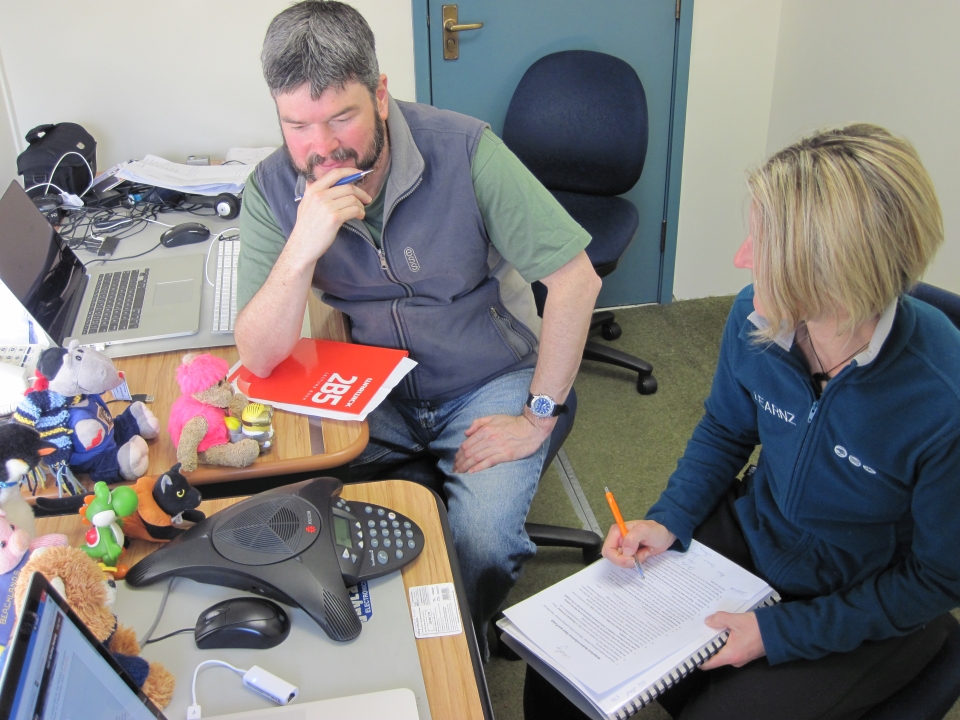
Greg and Shelley talk to Christian Renewal School and Coley Street School during the audioconference this morning. Image: LEARNZ.
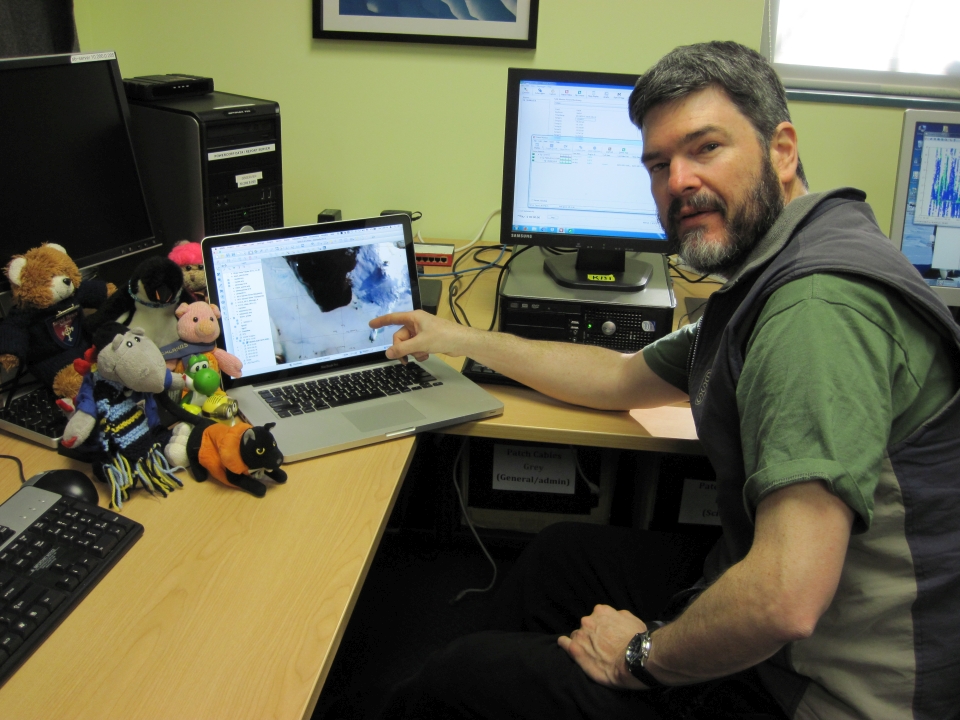
Greg explains how his team has been recording sea ice cooling and thickening at a site in McMurdo Sound. Image: LEARNZ.
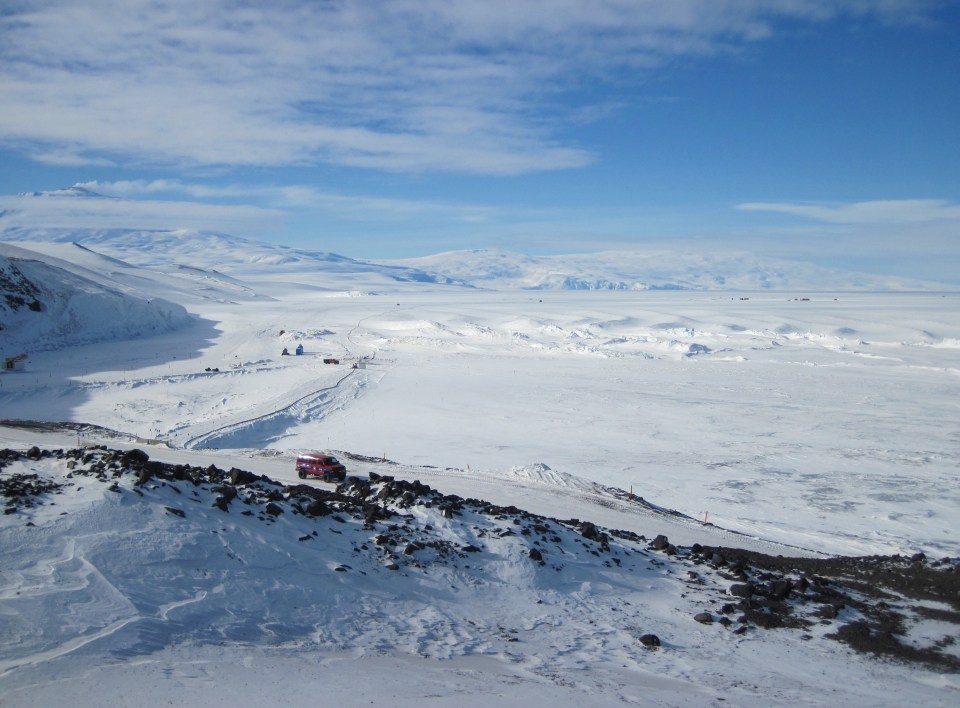
Looking out over the pressure ridges in the sea ice near Scott Base. How do you think these formed? Image: LEARNZ.
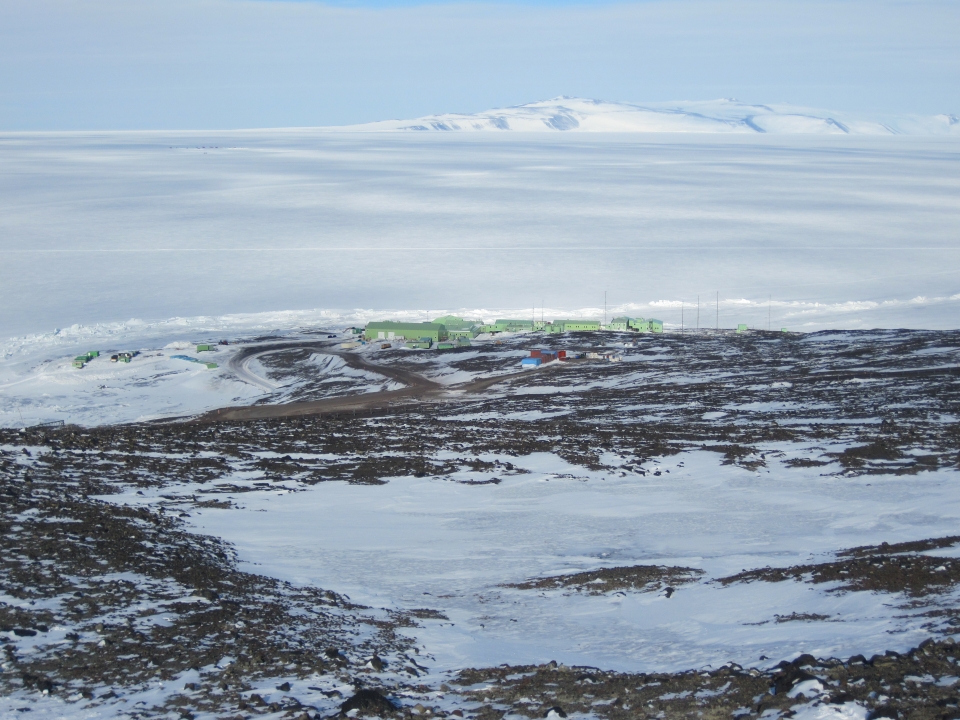
The green buildings of Scott Base were easy to spot as you walked up Crater Hill. Image: LEARNZ.
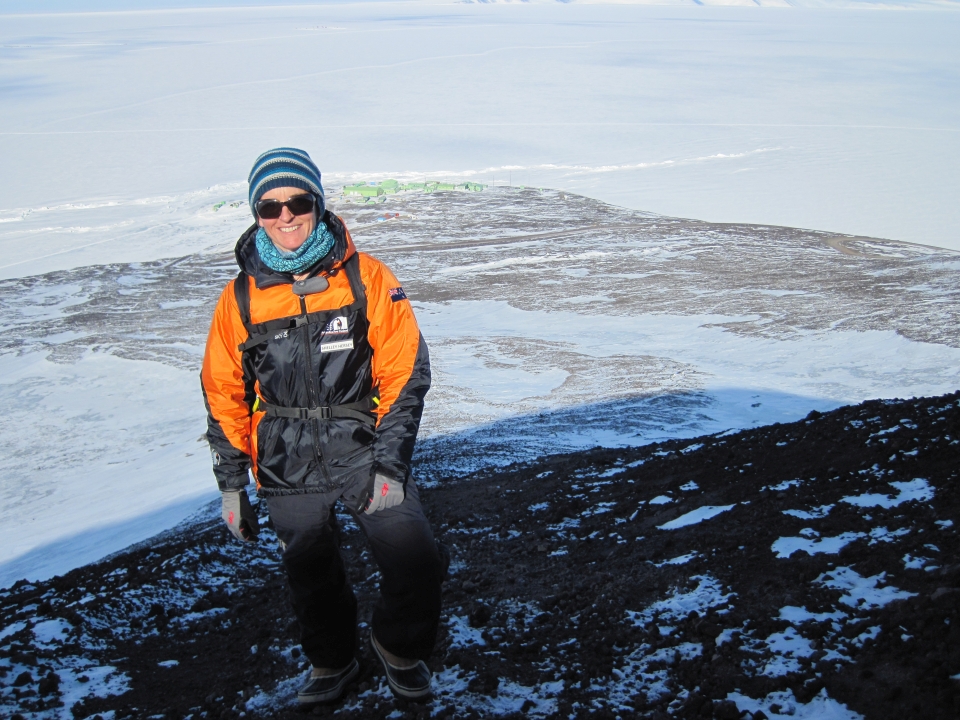
Shelley nears the top of Crater Hill on Ross Island. Image: LEARNZ.
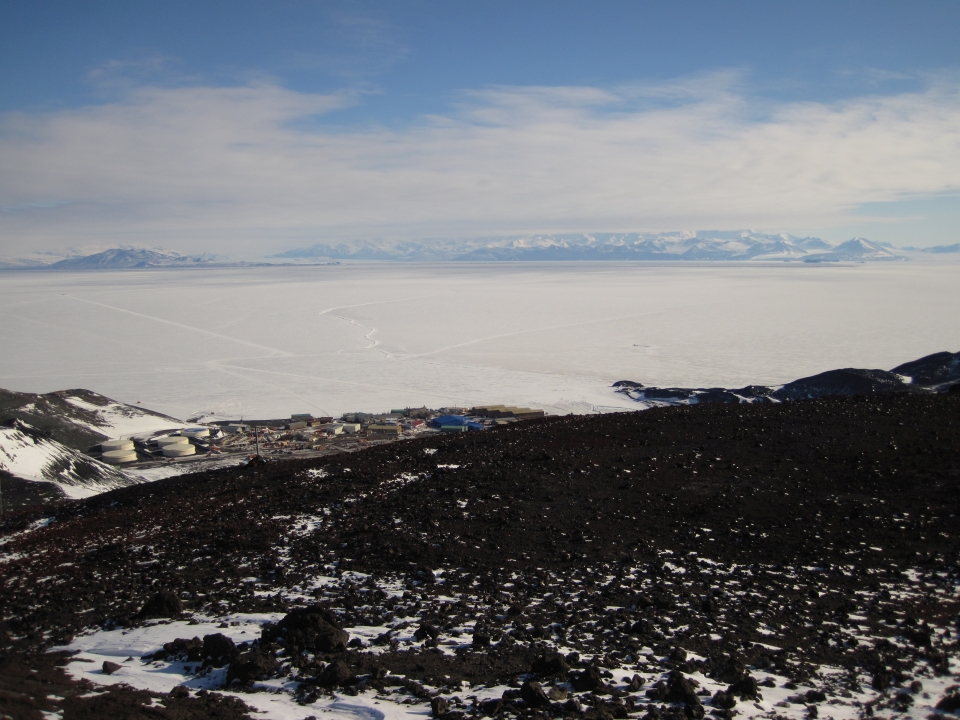
Looking out over the frozen ocean of McMurdo Sound. When do you think this sea ice will melt? Image: LEARNZ.
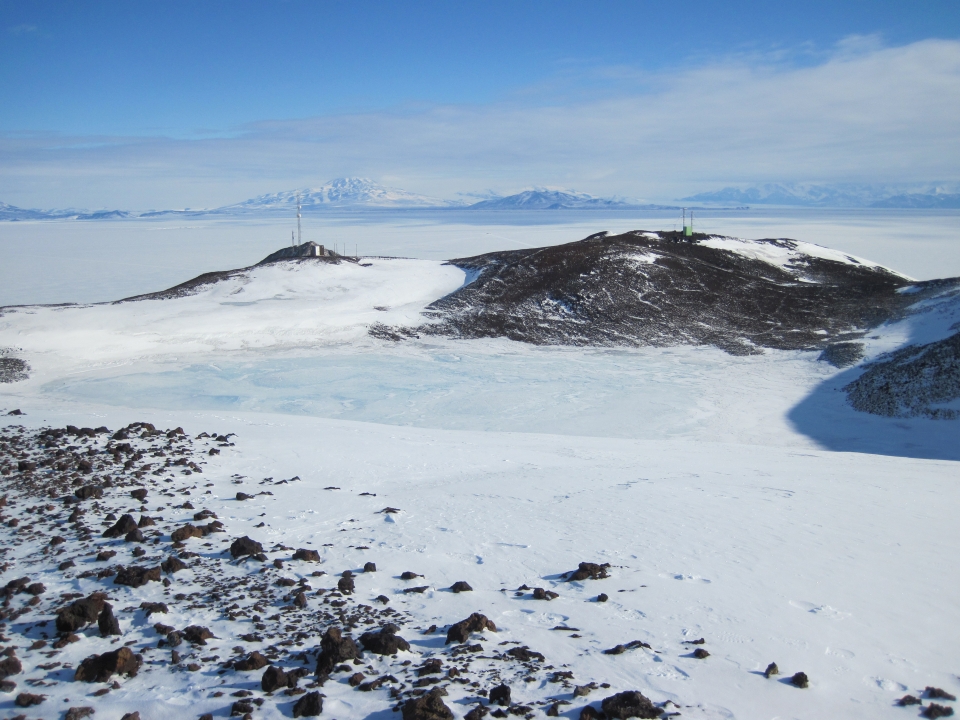
The crater rim on Crater Hill is a great place to look out over McMurdo Sound. Image: LEARNZ.
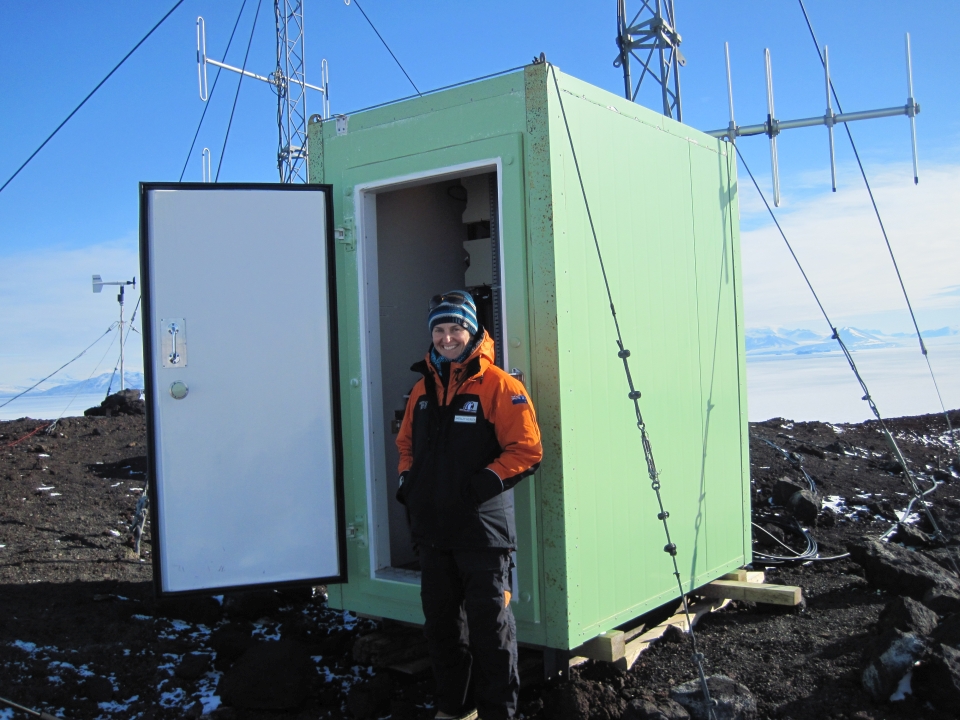
The base station that captures data from the sea ice temperature sensors ready to send it back to Scott Base and on to New Zealand via satellite. Image: LEARNZ.